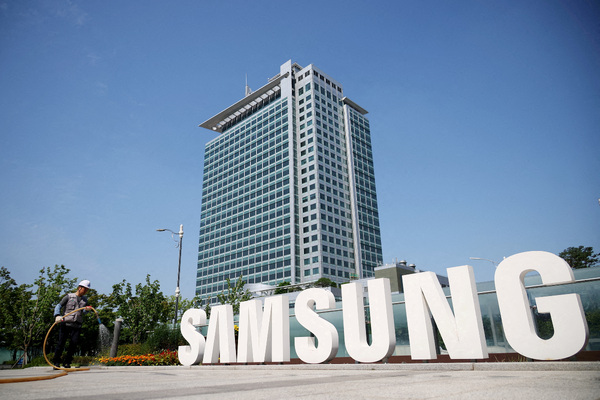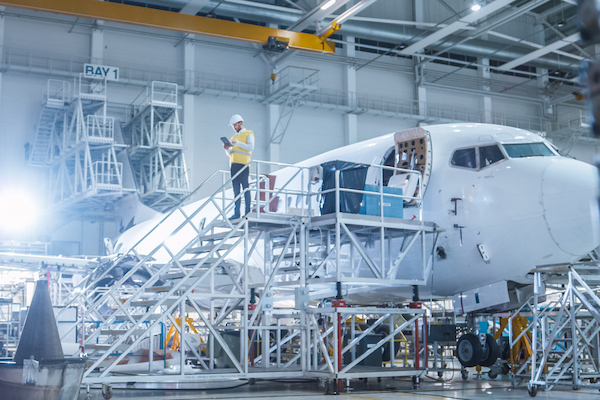How Ordnance Survey’s location intelligence can map a route through global problems
Keeping up with the latest technology and innovation can be tricky. Ordnance Survey’s location data is there to help with the biggest challenges in society
Steve Showell, Chief Finance Officer, Ordnance Survey
Ordnance Survey (OS) has built its success on continuous innovation. Since 1791 it has captured and maintained a vast geographic database of Great Britain, consisting of more than half a billion data points. This detailed database, updated more than 20,000 times a day, is vital to a wide range of public services, such as emergency response, land registry, transport and housing. It is also used in the private sector, from start-ups to large global tech companies, and across a wide range of sectors including property, finance, and agriculture.
Today, OS’s data, combined with two centuries of know-how, is relied on by customers across the globe, helping them create their own products and services, tackle challenges and support insightful decision making.
More than a map
Location or geospatial data is much more than a traditional 2D map. It is an accurate dataset consisting of layers of detailed information, from road network information on widths, traffic flow and bridge heights, to property and building level information including up-to-date address data.
The true power of location data is when it is used to link other data and information together. Using location to pull disparate information together can solve some of the biggest challenges of today. Location data can act as the golden thread connecting data to “place”, to help users gain valuable insights and a common picture of the environment.
Take the vast network of more than 1.5 million kilometres of cables and pipes under our streets. OS is proud to be working on a major project to help the UK government map the nation’s underground network of utility assets. The new mapping platform will bring together and connect data from the industry and is expected to deliver significant economic savings, as well as improve safety to utility workers and general disruption on the roads.
In the past two years the world has faced up to a global pandemic, ongoing climate change, logistical challenges and countless other obstacles. OS data and expertise has helped support all of them, and made significant, positive impacts in areas such as emergency planning and resilience, sustainability and urbanisation.
Emergency planning
OS played a critical role in analysing the impacts of Covid-19 and helped a range of public and private sector organisations in their response to the pandemic. Through a combination of trusted location data and expertise, where specialist OS data scientists joined critical government teams and departments, OS ensured that location became a key decision-making tool to help in the national pandemic response.
Expertise in tracking and modelling delivered insight on the movement of people and potential infection rates and hotspot locations. OS addressing data was vital for accurately delivering millions of home testing kits as well as supporting Test & Trace with more than 600 data requests per second at the height of the pandemic.
Location data was also used to map vulnerable citizens in the community who needed extra support during the lockdowns. For example, Barnsley Council was able to create a local Covid-19 test and trace system and developed a vulnerability index, at a household level, helped by OS datasets.
Other uses of location intelligence in action included helping to locate the best sites for vaccination centres, ensuring communities could access them by road and public transport. OS data was also used by start-up organisations to develop their own services, including a system of mapping indoor spaces to better improve social distancing guidelines and community apps to care for vulnerable neighbours.
Sustainability
One of the biggest challenges the planet faces is climate change. Location data has proven to be an asset in mapping and monitoring environmental changes, how these changes are managed, and analysing how effective solutions and response measures are. OS data has been used to model how UK coastlines may change because of high emissions and rising sea levels in future.
Satellite, or earth observation, information linked to OS location data is helping monitor, preserve and restore British peatlands. These valuable natural environments play a critical role in capturing and storing CO2 emissions from the atmosphere. In Dubai, earth observation data has tracked the growth and health of important vegetation such as mangroves and palm trees.
Last year’s COP26 demonstrated that billions need to be invested in combating climate change. To help protect these investments, any proposed solutions must be monitored and analysed. This, in turn, provides vital insight to help shape future projects and investments.
Supporting and ultimately improving environmental sustainability doesn’t end there. OS data supports customers in planning locations for renewable energy assets such as solar farms, wind turbines and future electric vehicle infrastructure. OS data enables users to analyse terrain maps, environments, properties and road networks, and connect it to other valuable datasets such as existing energy networks. Not only does this help people better understand a given location, analysing potential risk factors through data models helps them make better decisions.
Urbanisation
By combining efforts and connecting data, geospatial expertise is helping build new technologies and solutions for a more sustainable urban development system around the world.
In 2021, OS used cutting-edge innovation in artificial intelligence (AI) to help tackle urbanisation challenges facing Zambia. It created a new digital base map of the capital city Lusaka. The digital map, which provides detail right down to property level, is supporting the Zambian government in implementing a range of public services that benefit its citizens.
A connected future
The future of driverless cars, smart cities and connected devices will have an impact on our day-to-day lives, and trusted location data is key in unlocking many of these technological breakthroughs. Accurate data and location positioning can help create safe environments for autonomous vehicles, enable future mobile and fibre networks, and connect and manage the torrents of data generated by vast networks of sensors.
Today, the value of location data is at an all-time high and OS is focused on continuing to drive innovation and share its unrivalled expertise and know how to support the challenges of tomorrow and help its many customers to see a better place.

Business Reporter Team
Most Viewed
23-29 Hendon Lane, London, N3 1RT
23-29 Hendon Lane, London, N3 1RT
020 8349 4363
© 2024, Lyonsdown Limited. Business Reporter® is a registered trademark of Lyonsdown Ltd. VAT registration number: 830519543
Join the Business Reporter community today and get access to all our newsletters, and our full library of talk show episodes
Join the Business Reporter community today and get access to all our newsletters, and our full library of talk show episodes





